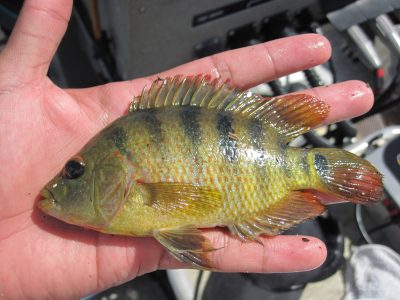Two cold spells, two years apart, and in two subtropical regions of the world have given scientists clues as to what happens when an extreme climate event strikes.

By tracking conditions before, during, and after a 2008 cold spell in China and a 2010 cold spell in Florida, FIU researchers found chilling effects on plants and animals, but not all were equal. Tropical species suffered more than their temperate counterparts, which were able to resist and recover from the record low temperatures.
“Long-term ecological studies like these give us opportunities to understand complex consequences of unanticipated events such as extreme cold snaps,” said Evelyn Gaiser, FIU professor of biology and lead principal investigator of the Florida Coastal Everglades Long Term Everglades Research (FCE LTER) program. “This short but extreme cold event mimicked the effects of a strong tropical storm or hurricane. The short-term consequences were different but the long-term conclusions were similar.”
In South Florida, tropical fish populations declined while the populations of their temperate counterparts remained unchanged or increased following the 2010 cold spell. Tropical American crocodiles declined while temperate American alligators weathered the cold, and tropical mangroves died while temperate salt marsh grasses survived. In China, the population of tropical butterflies in the Nanling National Nature Preserve dropped by 80 percent following the cold spell there, allowing temperate butterflies to dominate the area for two years.
The FIU researchers, along with others in the U.S. and China, have conducted long-term research programs in these two regions, including the FCE LTER program, part of the National Science Foundation’s LTER Network. With historic data in-hand, they were able to act quickly when the cold snaps arrived—evaluating conditions and the local plants and animals long after temperatures returned to normal. Their efforts resulted in 11 studies published in a special feature of Ecosphere.
“Tropical species are one of the most sensitive groups of plants and animals to climate warming,” said Ross Boucek, a researcher in the FCE LTER program who earned his doctorate from FIU in 2016. Boucek also organized the extreme cold spell special feature.
“The more we know about what keeps tropical species alive during cold events now, the better we can develop conservation strategies aimed at improving their resilience to global change.”
Along with disruptions to biodiversity, the cold spells impacted Florida’s fisheries. Economically lucrative bonefish, snook, and goliath grouper experienced mass mortality, while others, including red drum and gray snapper, were not affected. Some of those actually saw population increases after the cold spell passed, including redfish. Non-native species also proved to be less resistant to the cold spells than natives. Non-native bee populations in South Florida took nearly four years to recover and some non-native fish have shown no meaningful population recovery to date.
“More frequent extreme weather is likely with climate change,” said David Garrison, program director in the National Science Foundation (NSF)’s Division of Ocean Sciences, which co-funds NSF’s Long-Term Ecological Research Program with NSF’s Division of Environmental Biology. “These studies show that these extremes may be cold anomalies as well as warm ones.”
Photos from the 2008 and 2010 cold spell studies are available online.
This post “Cold spell chills tropical species” was originally published on FIU News.

